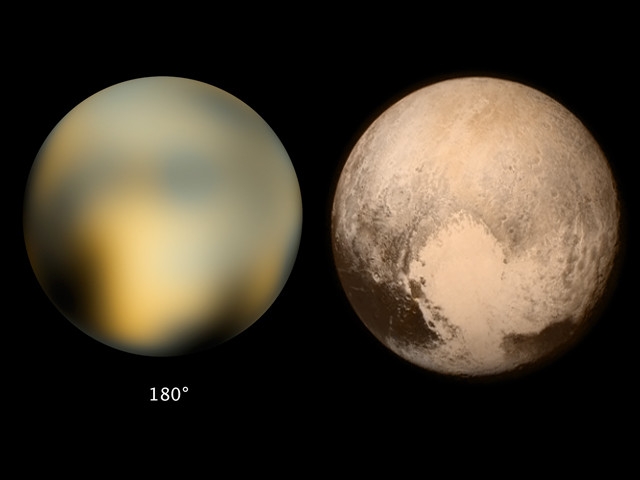Middlebury Astronomer Helps Explain the Mission to Pluto

MIDDLEBURY, Vt. – A Middlebury College astronomer says the data sent back to Earth from the New Horizons space probe has “exceeded expectations” in providing scientists with new information about Pluto, its five moons, and dwarf planets in general.
Jonathan Kemp, Middlebury’s telescope specialist, said the first major discovery from the past week “showed the dwarf planet to be slightly larger than previously thought, with a revised estimated diameter of 1,473 miles, which is less than one-fifth of the Earth’s diameter and smaller than our moon.”
In addition, the imagery of Pluto “may tell the story of a complex geological history. There are areas of older impact craters as well as areas seemingly absent of such craters that suggest more recent geological activity,” Kemp said. Observations have also detected tall, icy mountains on the dwarf planet located three billion miles away, he noted.
“These findings,” Kemp said, “may imply that when compared to the solar system’s age of 4.6 billion years old, some of Pluto’s surface features may be quite young – perhaps less than 100 million years old.”
The suspected polar ice caps on Pluto appear to consist of nitrogen ice and methane ice, and “these data – along with those yet to be sent back from the probe – will undoubtedly be studied carefully by planetary geologists and planetary geophysicists to better understand Pluto and its history and the complexities of our solar system.”
New Horizons is also sending back data about Pluto’s atmosphere. “Dominated by molecular nitrogen and including some methane and carbon dioxide, Pluto’s atmosphere appears to be thinner than previously thought,” Kemp explained.
Another revelation has been the physical properties of Hydra, the outermost moon of Pluto. The interplanetary space probe has shown it to be “irregularly shaped and estimated to be less than 30 miles across at its widest point,” Kemp said.

The NASA probe was launched in 2006 and is the first spacecraft to study Pluto and the Kuiper Belt. It is traveling through our solar system at more than 30,000 miles per hour, or about nine miles per second. New Horizons was closest to Pluto on July 14 when it was 7,800 miles from the dwarf planet’s surface.
Kemp directs operations at Middlebury’s Observatory and works closely with faculty and students in the Department of Physics. He came to Middlebury in 2012 from Hawaii where he was the telescope system specialist at the Joint Astronomy Centre (Maxwell Telescope and U.K. Infrared Telescope) for 11 years. Kemp, who has been a visiting astronomer at major observatories in Chile, South Africa, Arizona, and Texas, is a graduate of Columbia University.
– With reporting by Robert Keren

